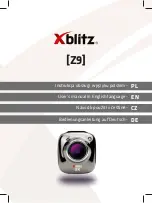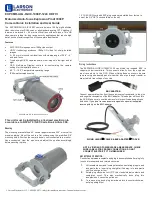
6
♦
Flank Panel
-- Right Flank Panel --
-- Left Flank Panel --
1.
Lens Mount: This IPNetcam is used with either a Manual or Auto Iris CCTV lens. The lens is
installed by screwing it clockwise into the mount on the IPNetcam. Once the lens is screwed in
completely to its mechanical stop position, you will then be able to rotate lens chassis back to suit the
set-up position of the IPNetcam.
2.
DIP Switch :
1. AES: Auto electric shutter.
2. DC IRIS: Use an auto iris (DC drive)
3. DHCP: Turn On / Turn Off to use the DHCP protocol. If the switch points
upwards, the device can change the setup of network function
(enable/disable) via the network.
4. STATIC IP: If the switch points down, the device can’t obtain an IP address
from the DHCP server. This option is needed to configure the
network communication settings.
3.
RS-485 D+
4.
RS-485 D-
5.
GND: Ground contact.
6.
ALARM OUT (OUTPUT): This is an alarm output trigger. Connect this to external devices such as
buzzers or lights. (
5V, 20mA
0V(Active)
)
7.
ALARM IN (INPUT): This is an alarm input that can be programmed in the menu system to active
low. (
5V, 20mA
0V(Active)
)
8.
ALARM RESET (INPUT): This is an alarm input that can be programmed in the menu system to
active low. (
5V, 20mA
0V(Active)
)
9.
RESET: Recover to factory default.
10.
5pins MINI USB Port: The user can use a USB device cable to connect the IPNetcam to the USB
port on the PC
11.
IRIS: Auto iris connector.
This camera works with a DC drive auto iris lens. Please refer to the pin assignment marked on the
camera when connecting the auto iris lens.
⑾
⑾
⑾
⑾
③
③
③
③④
④
④
④⑤
⑤
⑤
⑤
⑥
⑥
⑥
⑥⑦
⑦
⑦
⑦⑧
⑧
⑧
⑧
①
①
①
①
②
②
②
②
⑨
⑨
⑨
⑨
⑩
⑩
⑩
⑩








































